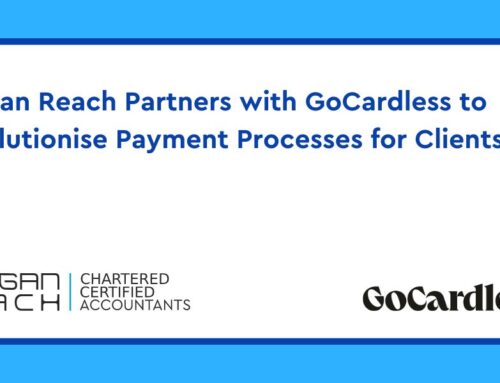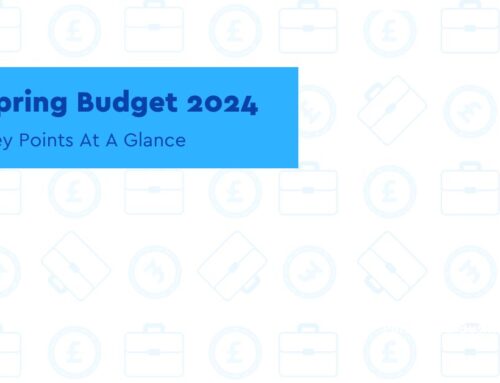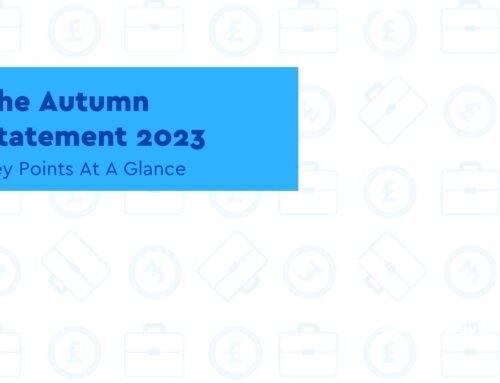News – Pensions Dashboards
Pension schemes urged to get ‘data ready’ for dashboards
Key Points
- Dashboards will allow savers to see what they have in their various pensions
- This will include their State Pension – in a single place online, at any time they choose
The government has called on pension schemes of all types and sizes to make sure their data is ready for pensions dashboards.
The calls come as the government publishes its response to a consultation that gathered feedback from industry, potential providers, consumer groups and future users on what data should be included and how this should be displayed to people.
Bringing pensions into the digital age, dashboards will allow savers to see what they have in their various pensions – including their State Pension – in a single place online, at any time they choose.
Ten years since the introduction of automatic enrolment and there are a record number of British people saving for retirement. With more people managing their finances online, the need for pensions dashboards is stronger than ever.
Minister for Pensions, Guy Opperman, said for many people, a pension is the most significant financial investment they will make in their life. That is why the introduction of pensions dashboards is so important.
“Clear pensions information at the touch of a button, including on the State Pension, will ensure savers are better informed and more engaged, while helping people to plan effectively for retirement, as well as to find lost and forgotten pension pots,” he said.
Pensions dashboards will offer savers a choice of how they keep track of their pension pots, with dashboards to be provided by the Money and Pensions Service (MaPS) and other organisations that meet the requirements to develop and host their own dashboards.
The first version of pensions dashboards will offer people the opportunity to find their pensions and then view information about their value, but as the use of dashboards becomes more commonplace, user insights and experience will allow for the dashboards experience to be enhanced further.
This article was sourced from Financial Accountant: https://www.financialaccountant.co.uk/news/pension-schemes-urged-to-get-data-ready-for-dashboards
News – PAYE
PAYE Settlement Agreements (PSA) form – new digital version
Key Points
- Employers use form PSA1 to tell HMRC the value of items included in a PAYE Settlement Agreement
- The new digital format offers many benefits for employers
- These include easy, standardised reporting, improved accuracy, speedier processing times and fewer resulting queries
Form PAYE Settlement Agreement (PSA1) has been redesigned following a review of customer feedback from employers who make use of PSAs.
HMRC has encouraged all employers to take up the new reporting method as the most efficient way to submit PSA1 and the tax authorities preferred method of receiving it.
Employers use form PSA1 to tell HMRC the value of items included in a PAYE Settlement Agreement.
The new digital format offers many benefits for employers, including easy, standardised reporting, improved accuracy, speedier processing times and fewer resulting queries.
If using the paper version, employers may have to complete more than one PSA1 depending on where employees live. The new digital PSA1 will allow employers to submit one form for all employees regardless of their location.
Details
You should only report benefits or expenses included in the PAYE Settlement Agreement.
You must include all employees who have received the benefits or expenses including any employees that earn below the personal tax allowance.
If you’re an employer and need to tell HMRC the value of items included in a PAYE Settlement Agreement, you can either:
- use the online form service
- fill in form on-screen, print it off and post it to HMRC
If you’re using the postal form, make sure you select the correct one as employees living in countries with devolved tax powers (Scotland or Wales) may be subject to different rates of Income Tax.
You must pay any tax and National Insurance owed under a PSA by October 22 after the tax year the PSA applies to.
Before you start
You will need to enter:
- your email address
- the tax year that the notification applies to
- your employer PAYE reference number
- which tax rates apply to employees who were provided the benefits or expenses, that is:
- Scottish
- Welsh
- rest of UK (England and Northern Ireland)
- the total value (including VAT) of each type of benefit or expense provided to employees by tax band (for each tax rate area), for example total amount of travel expenses paid to employees on a 20% Scottish tax rate
This article was sourced from gov.uk: https://www.gov.uk/government/publications/paye-paye-settlement-agreement-psa1#full-publication-update-history
News – Employment Rights
New guidance brings clarity on employment status for workers and businesses
Key Points
- New government guidance will act as one-stop-shop for individuals and businesses to understand which employment rights apply to them
- Gig economy workers set to benefit the most, as fresh guidance enables them to check their workplace is treating them fairly
Businesses and workers, particularly those in the gig economy, will benefit from greater clarity over their employment status, thanks to new guidance published by the government this week.
A person’s employment status is what defines the rights and employment protections they are entitled to at work including pay, leave and working conditions, and therefore dictates the responsibilities that an employer owes to that worker.
This week’s new guidance brings together employment status case law into one place for businesses and individuals to access. This will support workers by improving their understanding of what rights they are entitled to at work, enabling them to have informed discussions with their employer and take steps to claim or enforce them where necessary.
Crucially, the guidance also clarifies the rights that gig economy workers are entitled to – from the national minimum wage to paid leave – while offering them the same degree of flexibility to take on additional work to top up their income, if they choose. This clarity comes following the landmark Uber Supreme Court judgement which held that individuals in the gig economy can qualify as ‘workers’, meaning they are entitled to core employment protections.
The new guidance includes advice for micro businesses, start-ups and SMEs that have less capacity and legal expertise to understand the law. By reducing the risk of companies being fined by rules they have broken unknowingly, it will inject confidence into businesses to support their staff and stimulate economic growth. Equally, the guidance will help to curb unscrupulous employers from attempting to exploit the system in order to save on employment costs.
The guidance is being published alongside a response to a consultation on employment status, where many respondents called for additional clarity around the employment status boundaries and examples of how to apply the rules to different scenarios.
The UK has a ‘3-tiered’ employment status framework, broken down by employee, worker and those that are self-employed. This system helps to create a flexible and dynamic labour market but has led to some individuals not understanding their employment status.
The guidance encourages workers to contact Acas for further advice should they think their employment status is wrong, and to engage their employer in conversations about their rights before taking further steps to hold them to account if needed.
There are 2 additional pieces of guidance for:
- Individuals, to help them understand their employment status so that they know their rights, can have informed discussions with their employer about them, and can take steps to claim them and have them enforced where necessary
- Employers or engagers, to help them understand individuals’ employment status so they comply with the law, helping ensure individuals receive the rights they are entitled to, and to avoid unnecessary disputes and associated costs
This article was sourced from Gov.uk: https://www.gov.uk/government/news/new-guidance-brings-clarity-on-employment-status-for-workers-and-businesses
News – R&D Tax Credits
R&D credit claimants to pre-register with HMRC
Key Points
- HMRC is telling businesses that all future R&D claims must be made digitally
- The tax authority estimates that 90,000 companies will be affected by the changes
Businesses of all sizes will be required to pre-register in order to apply for R&D tax credits as of next year.
In order to tackle abuse of R&D relief, HMRC is telling businesses that all future R&D claims must be made digitally, estimating that 90,000 companies will be affected by the changes. The Government will announce the cost of the new measures during the autumn Budget this year.
Next year, companies will need to inform HMRC in advance if they plan to make an R&D claim via a digital service.
Each claim must be endorsed by a named senior officer of the company, and each pre-register will need to be within six months of the end of the period to which the claim relates.
The new rules will also amend the time limit for making a claim to two years from the end of the period, rather than 12 months from the statutory filing date. This measure will prevent companies that don’t receive a notice to file from benefiting by having more time to make a claim.
HMRC says businesses growing from the SME scheme to the research and development expenditure credit (RDEC) will be protected, so that when an SME within a group exceeds the threshold, all companies in the group will retain SME status for one year afterwards.
Smallest businesses eligible for Help to Grow scheme
The Government’s help to grow scheme has now expanded to businesses with fewer than five employees.
Over a million more businesses will now be eligible for the scheme, which has also been expanded to include one-to-one advice and additional software.
Launched in January this year, the scheme was established to help smaller to medium-sized businesses purchase software and digital technologies to help them grow.
Eligible businesses can get up to 50% off approved technologies, worth up to £5,000 in related costs.
Previously, only businesses with more than five employees were eligible for the scheme, however, businesses with 1-249 employees can now access the discounts.
The scheme now also covers eCommerce software for the first time.
Employer PAYE — new recurring Direct Debit functionality
Currently employers can set up a Direct Debit to collect a single payment, but not a recurring Direct Debit.
That is about to change as HMRC are going to offer a recurring Direct Debit to employers.
Once available, there will be a change to the Business Tax Account (BTA) and the employers’ liabilities and payments screens. There will be a new link for ‘Set up a Direct Debit’. This will allow employers to set up a Direct Debit instruction once (unless they cancel it), authorising HMRC to collect directly from their bank account based on their return submissions.
After an employer has set up a Direct Debit, the link will change to ‘Manage your Direct Debit’ and employers will be able to view, change or cancel the Direct Debit online.
Payments which will be covered by Direct Debit will show within employers’ liabilities and payment screens for both employers and agents. HMRC will be aiming to deliver this service in early Autumn, around mid-September at the latest.
Get In Touch
At Morgan Reach, we understand every business needs a little help now and again-especially when it comes to the financial side of things. Therefore, to help our clients and visitors we endeavour to cover as much of the business news as possible. If you are self-employed or run a business and need assistance and advice on how these news could make a difference to you or your business, feel free to get in touch with the experts at Morgan Reach. Our business growth experts at Morgan Reach will guide you through what support is available for you or your business as well as the latest news that may affect you.







